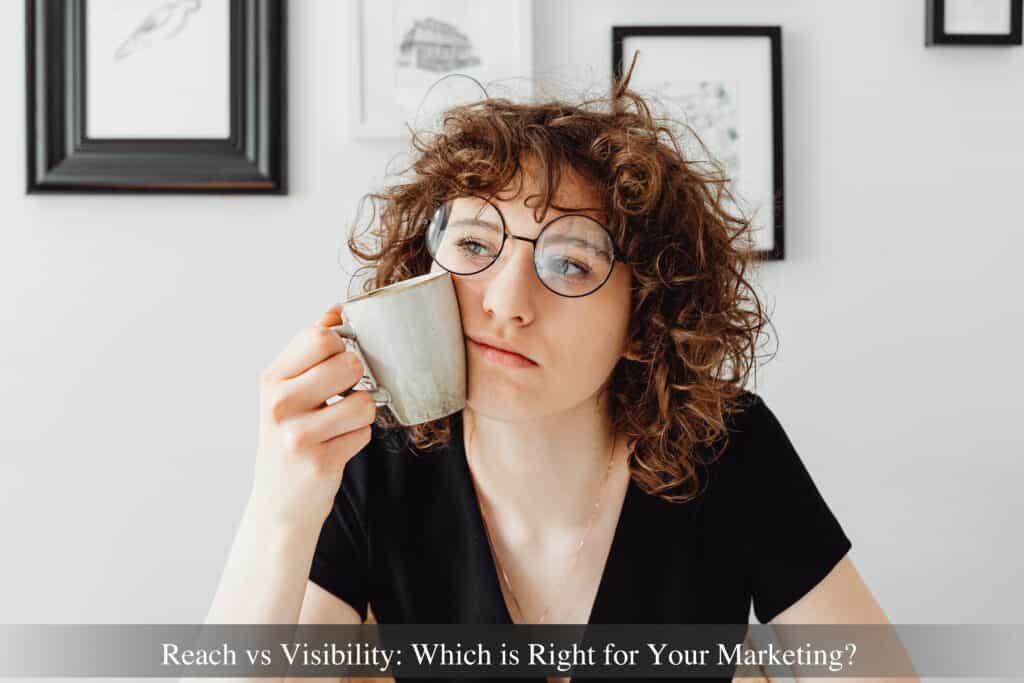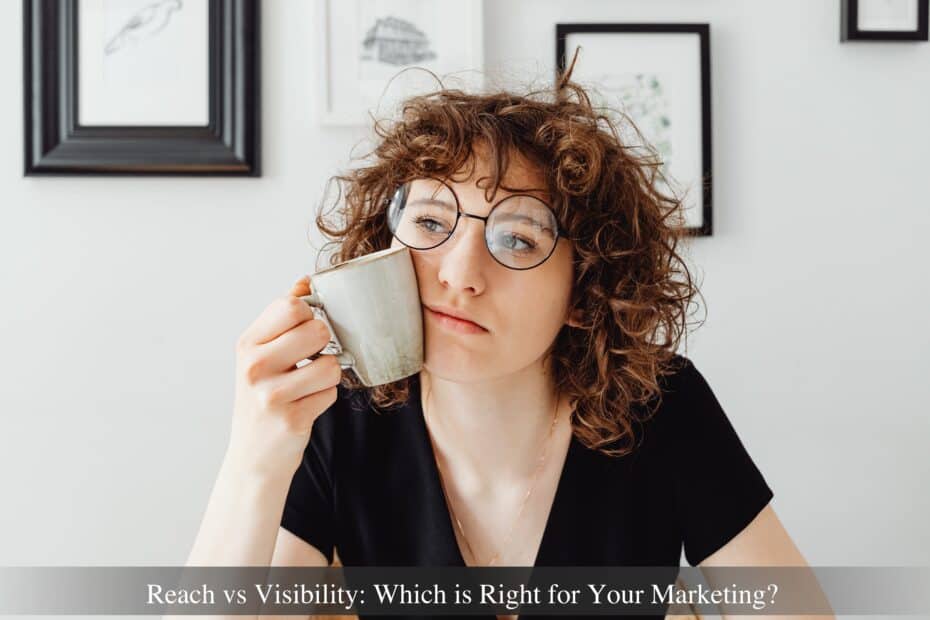
A few weeks ago I was reading a newsletter and the author was having fun with a “what’s in and what’s out” list for 2024.
There was one thing on the list that stood out to me. It showed visibility being in and reach being out.
My first reaction was that visibility should always be in but it made me think. Should that always be the case?
Unless you live in a world where nuance doesn’t exist, the answer is, it depends.
But before you can even come to what the right answer is for you, we need to take a step back and consider what reach and visibility mean from a marketing perspective.
I’m going to focus on the following in this article:
- What reach is
- What visibility is
- Considerations for using reach and visibility
- How to choose between reach, visibility, or maybe both
Let’s get to it.
What is Reach?
It just so happens that as I write this, the Super Bowl is coming up and a big part of the viewing experience are the commercials.
They’ve become almost as big as the game itself with the marketing world analyzing and picking the best commercials in the weeks following the game.
This year, the cost of a 30-second commercial that airs during the big game is about $7 million.
That’s a lot of cash for one commercial and that’s not even taking into consideration the cost to make it.
Why are companies spending more on one commercial than you and I would spend on marketing in 20 years (or more)?
The answer is simple. Reach.
Reach is going beyond your audience to get in front of as many people as possible.
The idea is that higher exposure will mean more people will consider your product or service.
In 2023, 115.1 million people watched Super Bowl LVII.
I think we can both agree that’s a lot of people and the companies running ads during this event are getting plenty of reach. For large companies who are trying to increase sales every quarter to appease shareholders, it’s a great opportunity.
However, reach isn’t a magical elixir that will convince people to buy your product.
An important consideration is that you don’t have control over who sees it which means you could be reaching people who have no interest in buying from you regardless of how fancy your marketing is.
Focus on reach could be nothing more than a waste of your resources.
And that’s why visibility could be a better option for you.
What is Visibility?
Visibility is being seen but If you’re marketing and you’re not connecting with the right people, meaning those who are interested in your product or service, it doesn’t matter that you have visibility.
The more specific on who you want to see you, the better.
For example, If you own a craft brewery and you are doing marketing for it you need to take into account that not everybody likes beer. Of those who do, many won’t like craft beer.
This is why when you think of visibility I want you to think of it in terms of whether you are being seen by the right audience, or what marketers would call your target audience.
In the case of our example, you want to target people who like craft beer.
The concept of visibility in a marketing sense isn’t just being seen. It’s being seen by your target audience.
Reach or Visibility?
You might be wondering where you should focus. Reach or visibility?
It comes down to what’s best for what you’re trying to accomplish.
Think of them as tools.
Reach is a more general tool. It wants to get the word out to everybody.
Visibility is more of a specialty tool. It wants to get the word out but only to those who would be interested in it.
The tactics you use should support your choice but they also need to fit into your budget.
For example, paid media options such as ads for channels such as television, radio, and billboards lend themselves to reach but can be more costly.
Other ad types that fall under paid media, such as social ads and Google ads can be more budget-friendly while also allowing you more control over who sees them and lends itself to visibility.
Depending on how you employ them, things like podcasts, blog posts, interviews, media coverage, video, and social media could lend themselves to either while an email newsletter focuses on visibility because you only communicate with the people who choose to be on your list.
And yes, you can choose to do some activities that focus on visibility while also doing others that extend your reach.
Make the Right Choice
Two great tools from Katie Robbert, the CEO of Trust Insights, to help you make the right decisions are creating user stories and employing what she calls the 5Ps.
A user story looks like this: As a [persona], I [want to], [so that].
For example, if you are a marketing manager, your user story might look like this: As a marketing manager, I want to use social media ads so that I can increase the reach of our marketing.
The 5Ps stand for:
- Purpose
- People
- Process
- Platform
- Performance
Purpose is the why. People focuses on who needs to be involved. Process focuses on how you’re going to do it. Platform focuses on where it’s going to happen and performance focuses on how to measure what you’re doing.
Both of these tools are good at helping you determine the right choice for you.
Coming back to the beginning of the article, it’s not really about focusing on what’s in and ignoring what’s out. It’s about doing what’s right for your business.
Tell me what you think on LinkedIn or Threads.
*Photo by Karolina Grabowska
- Is Your Marketing Connected? - March 6, 2025
- Stop Planning and Start Strategizing - October 24, 2024
- The Importance of Creating a Connection With Your Marketing - June 6, 2024

